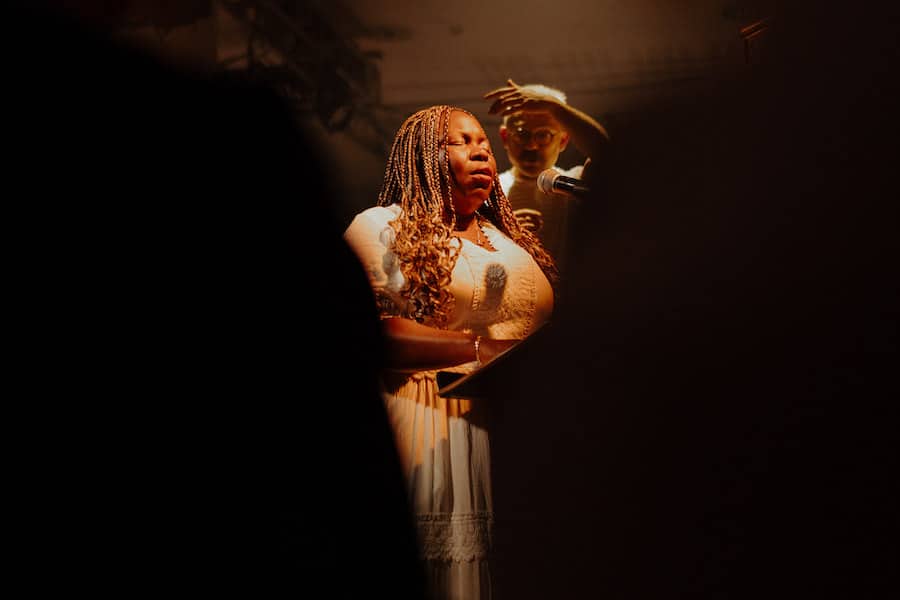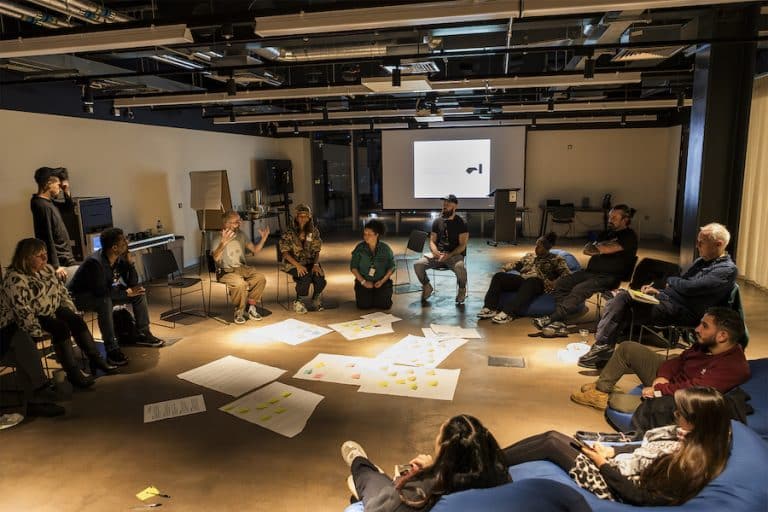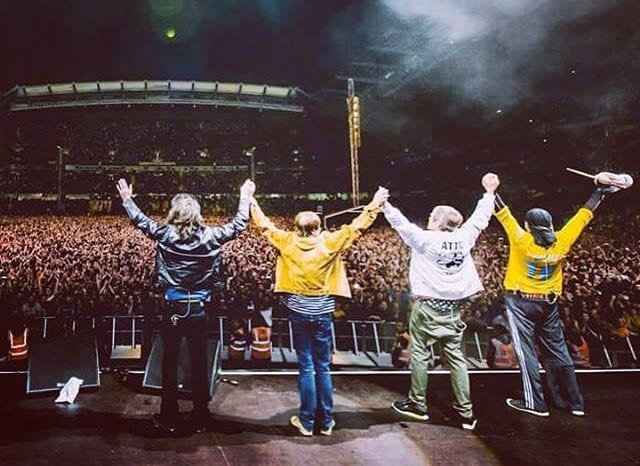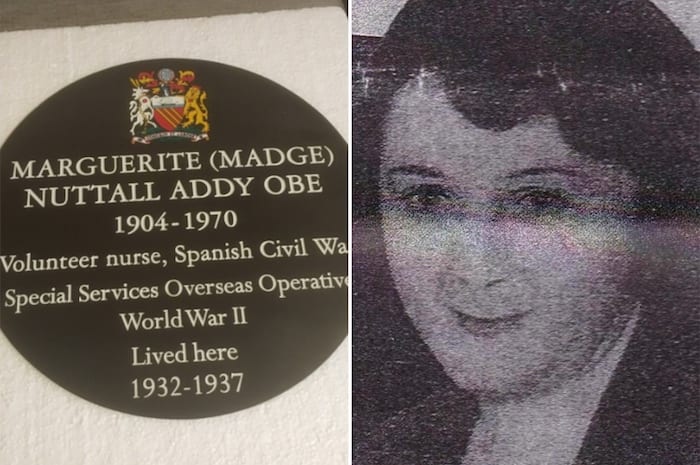Review: Paraorchestra’s Symphony of Sorrowful Songs at RNCM is a ‘life affirming, joyously uplifting experience’
- Written by Thom Bamford
- Last updated 3 months ago
- City of Manchester, Featured, Music

“Sad music is the best kind of music,” declared Charles Hazlewood before stepping onto the podium last night at the Royal Northern College of Music (RNCM). “It connects us to something universal, something raw and truthful.”
The evening unfolded as Charles Hazlewood led the Paraorchestra in a deeply moving exploration of grief, loss, and resilience, centred on Franz Schubert’s Death and the Maiden (arr. Mahler) and Henryk Górecki’s Symphony of Sorrowful Songs.
Blending classical traditions with bold contemporary elements, the Paraorchestra created an otherwordly atmosphere that captivated the audience. At its heart was the luminous soprano Victoria Oruwari, whose voice brought Górecki’s symphony to life with an emotional intensity that held the room in awe.
Through music steeped in sorrow, the performance invited listeners to embrace their shared humanity, finding beauty and strength in vulnerability. The result was an evening of extraordinary depth and emotional clarity.
Paraorchestra: Symphony of Sorrowful Songs
Schubert’s Death and the Maiden (arr. Mahler)
The evening began with Mahler’s arrangement of Schubert’s Death and the Maiden. From the first ominous notes, the strings—led with precision by principal violinist Tzu-Fan Tang—set an intense, brooding atmosphere.
The arrangement magnified the work’s drama, its restless rhythm evoking Schubert’s struggle with illness and mortality.
Hazlewood’s conducting brought out both the taut urgency and delicate introspection of the piece.
The ensemble performed with unity and depth, every pizzicato and fortissimo resonating with emotional weight. The second movement’s theme was achingly tender, a fleeting respite in the face of the inevitable.
As the final movement surged to its tempestuous conclusion, the audience was left breathless by the sheer intensity of the ensemble’s execution.
Górecki’s Symphony of Sorrowful Songs
The second half of the program featured Górecki’s iconic Symphony of Sorrowful Songs, a meditation on loss, longing, and love. Polish composer Górecki drew on his own experiences of grief and the legacy of maternal sacrifice in Polish culture to craft this work.
At the heart of the performance was acclaimed soprano Victoria Oruwari, whose soaring voice carried the symphony’s emotional weight with unmatched depth and clarity.
Oruwari, a Nigerian-born London-based soprano, brought her wealth of experience to the piece, channelling its profound themes with sensitivity and power. Her performance was beautiful, otherworldly and transcendental. The control she has is immense and she was well worthy of the three standing ovations she received a the end of her performance.
First Movement
The symphony opened with a slow, mournful canon in the strings, evoking the sense of an eternal, unbroken cycle of sorrow. Over this shimmering texture, Oruwari intoned a 15th-century lament—a mother’s prayer for her dying son.
Her voice floated above the orchestra, pure and penetrating, each phrase an invocation of grief and hope. Hazlewood maintained a measured tempo, letting the music unfold with solemn dignity.
Second Movement
The second movement’s text, written by an 18-year-old girl imprisoned by the Gestapo, resonated with chilling immediacy. Oruwari’s voice embodied the young girl’s plea to the Virgin Mary, rising in heart-wrenching waves over the orchestra’s drone.
The use of drones—a hallmark of Górecki’s style—added a hypnotic, otherworldly quality. The layered harmonies of the strings, built through canons, created a beautiful wall of sound that seemed to envelop the entire hall.
Third Movement
In the symphony’s final movement, the text of a traditional Polish folk song—a mother lamenting her lost son—was delivered with devastating poignancy. Oruwari’s control was remarkable; her pianissimos seemed to hang suspended in the air, drawing the audience into an intimate communion with the music. The orchestra responded with a delicacy that belied its size, creating an atmosphere of shared mourning and solace.
A New Kind of Orchestra
The Paraorchestra is no ordinary ensemble. Its integration of disabled and non-disabled musicians, as well as its use of cutting-edge technology, pushes the boundaries of what an orchestra can be.
The inclusion of synthesizers, played by Hazel Mills, Dan Moore, and Drew Morgan, added a modern dimension to Górecki’s symphony, complementing its timeless themes with a contemporary resonance.
Charles Hazlewood’s vision for the Paraorchestra extends far beyond inclusivity; it redefines the very idea of an orchestra. In his words, “An orchestra is simply a collective of people making music together. Why wouldn’t it include everything and everyone?”
Schubert’s relentless confrontation with death and Górecki’s meditations on sorrow were brought to life with an emotional depth that left the audience profoundly moved.
At the core of the evening was Victoria Oruwari’s extraordinary voice, which served as both a vessel for Górecki’s maternal themes and a bridge connecting the past with the present. Despite the maudlin subject matter, this was a life-affirming, joyously uplifting experience.
This was music at its most powerful—offering not only beauty but also a sense of shared humanity. As Paraorchestra continues its mission to innovate and include, it is clear that it is not just changing perceptions of what an orchestra can do—it is changing lives.
You can find out more about what’s on at RNCM by clicking here
- This article was last updated 3 months ago.
- It was first published on 16 November 2024 and is subject to be updated from time to time. Please refresh or return to see the latest version.
Did we miss something? Let us know: [email protected]
Want to be the first to receive all the latest news stories, what’s on and events from the heart of Manchester? Sign up here.
Manchester is a successful city, but many people suffer. I Love Manchester helps raise awareness and funds to help improve the lives and prospects of people across Greater Manchester – and we can’t do it without your help. So please support us with what you can so we can continue to spread the love. Thank you in advance!
An email you’ll love. Subscribe to our newsletter to get the latest news stories delivered direct to your inbox.
Got a story worth sharing?
What’s the story? We are all ears when it comes to positive news and inspiring stories. You can send story ideas to [email protected]
While we can’t guarantee to publish everything, we will always consider any enquiry or idea that promotes:
- Independent new openings
- Human interest
- Not-for-profit organisations
- Community Interest Companies (CiCs) and projects
- Charities and charitable initiatives
- Affordability and offers saving people over 20%
For anything else, don’t hesitate to get in touch with us about advertorials (from £350+VAT) and advertising opportunities: [email protected]

Big Issue, bigger heart: Manchester comes together for Colin

Why generations of Mancunians have loved Kabana for over 40 years

Art, tech and community collide in Manchester’s most interactive exhibit yet


Meet the group reviving Manchester’s urban ecosystem through community action















